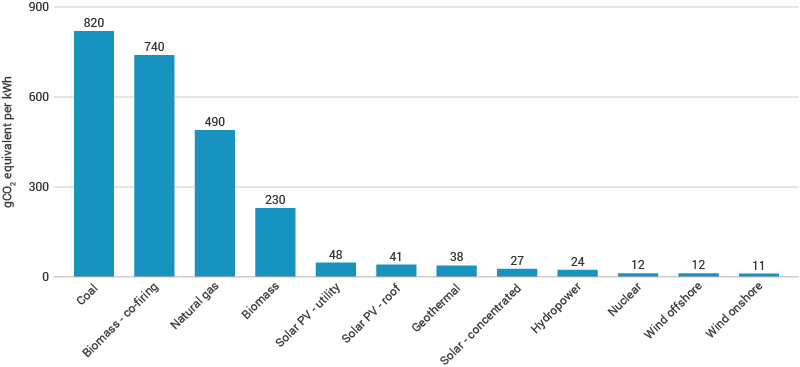Last edited Sun Jul 21, 2024, 11:38 PM - Edit history (2)

from
https://www.democraticunderground.com/10143004710#post7
Solar comes out very well on concrete, but terrible on steel, glass, and other.
==============================================
https://www.cnbc.com/2021/02/14/bill-gates-concepts-to-understand-the-climate-crisis.html?&doc=107178583
Land use efficiency, watts/square meter:
fossil fuel: 500 to 10,000,
nuclear: 500 to 1000,
solar: 5 to 20,
wind: 1 to 2 -- that's 1 to 2 MW per square kilometer
Amount of square kilometers needed to produce 1 GW (1,000 MW), calculated from above:
Fossil fuel: 0.1 to 2 square kilometers
Nuclear: 1 to 2 square kilometers
Solar: 50 to 200 square kilometers
Wind: 500 to 1,000 square kilometers
A square kilometer is 0.3861 square miles, A square mile is 2.590 square kilometers
As far as I know, the solar and wind figures above are for when they are the only use for the land they are on. In fairness, especially with wind, one can have wind turbines on actively-farmed farmland and grazing pastureland. There are also articles like on sheep grazing under solar panels, solar panels covering canals, and the like.
===========================================
While I'm at it, I'm reminded of this graphic (just so I have all this info that I know about in one place):
CO2 equivalent emissions of different power sources, grams/KWH (entire life cycle)
https://world-nuclear.org/information-library/energy-and-the-environment/carbon-dioxide-emissions-from-electricity
The site blocks one from seeing anything with an email solicitation but eventually that goes away, takes at least 30 seconds, grr
On a life-cycle basis, nuclear power emits just a few grams of CO2 equivalent per kWh of electricity produced. Whilst estimates vary, the United Nations (UN) Intergovernmental Panel on Climate Change (IPCC) has provided a median value among peer-reviewed studies of 12g CO2 equivalent/kWh for nuclear, similar to wind, and lower than all types of solar.2

Figure 1: Average life-cycle CO2 equivalent emissions (source: IPCC)
 = new reply since forum marked as read
= new reply since forum marked as read

